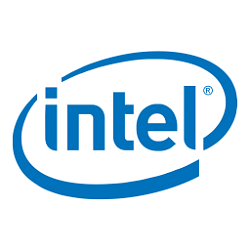New
#1
That is 0 Kelvin! Not for home computers I guess...

Intel researchers are taking new steps toward quantum computers by testing a tiny new “spin qubit” chip. The new chip was created in Intel’s D1D Fab in Oregon using the same silicon manufacturing techniques that the company has perfected for creating billions of traditional computer chips. Smaller than a pencil’s eraser, it is the tiniest quantum computing chip Intel has made.
The new spin qubit chip runs at the extremely low temperatures required for quantum computing: roughly 460 degrees below zero Fahrenheit – 250 times colder than space.
The spin qubit chip does not contain transistors – the on/off switches that form the basis of today’s computing devices – but qubits (short for “quantum bits”) that can hold a single electron. The behavior of that single electron, which can be in multiple spin states simultaneously, offers vastly greater computing power than today’s transistors, and is the basis of quantum computing.
The zigzag lines in the photo are printed wires connecting the chip’s qubits to the outside world.
One feature of Intel’s tiny new spin qubit chip is especially promising. Its qubits are extraordinarily small – about 50 nanometers across and visible only under an electron microscope. About 1,500 qubits could fit across the diameter of a single human hair.
This means the design for new Intel spin qubit chip could be dramatically scaled up. Future quantum computers will contain thousands or even millions of qubits — and will be vastly more powerful than today’s fastest supercomputers.
More: Quantum Computing at Intel | The Future of Quantum Computing is Counted in Qubits (Intel Explainer) | All Intel Images
A 2018 photo shows Intel’s new quantum computing chip balanced on a pencil eraser. Researchers started testing this “spin qubit chip” at the extremely low temperatures necessary for quantum computing: about 460 degrees below zero Fahrenheit. Intel projects that qubit-based quantum computers, which operate based on the behaviors of single electrons, could someday be more powerful than today’s supercomputers. (Credit: Walden Kirsch/Intel Corporation)
Source: https://newsroom.intel.com/news/inte...tum-computing/
Tweet
— Twitter API (@user) View on Twitter
Nope,
absolute zero is impossible:roughly 460 degrees below zero Fahrenheit
Absolute Cold | Space Time - YouTube
My understanding is that future quantum computers will not be able to perform all tasks faster than today's supercomputers, but there are many tasks that they will be able to perform exponentially faster.
Also, to utilize the fact that subatomic particles can be in multiple quantum states simultaneously, all measurements must be made indirectly. If direct measurements are made, a quantum computer won't have any advantage over a traditional computer.
They will be great for communication and encryption.
Also because a qubit holds 3 states, the wil be used as part of AI that need to make fast decision where many possibilities need to be computed.
But a quantum computer will only be a backend, because a normal computer will be needed to output and translate the data.
IBM Q Experience
Beginner's guide: IBM Q ExperienceWelcome to the IBM Q Experience!
Explore the world of quantum computing! Check out our User Guides and interactive Demos to learn more about quantum principles. Or, dive right in to create and run algorithms on real quantum computing hardware, using the Quantum Composer and QISKit software developer kit.
And on GitHub: qiskit-backend-information/backends/tenerife/V1 at master · QISKit/qiskit-backend-information · GitHub